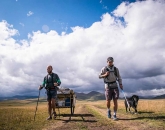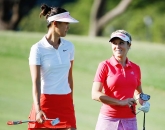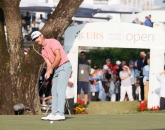
Herein lies one of the most important aspects of the work that goes into making a champion. When McIlroy is on the range, away from the prying eyes of the public, there is always a goal; an end game he is working towards. Smashing ball after ball just to feel better about your own work ethic is a mistake many have made in the past and something he is keen to avoid.
“I’ve always said quality over quantity,” he explains. “Some of my best range sessions have been 40 to 45 minutes, but then there are some times where you need to hit a lot of balls, especially if you’re working on something for the repetitions just to try and make it comfortable. I’d say on average, if it’s a practice week where I’m getting ready for a tournament, I’d hit balls for at least an hour-and-a-half to two hours every day. That’s just on the range, but then I’ve got putting and short game, and then I go on the course. So you’re basically at the course from nine in the morning to three or four in the afternoon, so it’s a pretty long day.”
On the range at the Bear’s Club near his home in Florida is where the hard work takes place. Without commentators dissecting his every move and members of the public asking for selfies, his god-given talent can become something more tangible - the foundations are laid and the promise becomes reality. But one thing we all like about Rory is that, unlike the greatest player of the previous generation, Tiger Woods, we somehow feel more connected to him. At times we glimpse the human being behind the global megastar. Ask him a question and more often than not, he’ll give you an honest answer. So of all the off-course elements, the hours in the gym and on the range, what’s the hardest part?
“I find going to the range and practising on my game more of a chore than going to the gym,” he says. “If I’m practising with people, or I have Michael [Bannon, his swing coach], Steve [McGregor] or JP [Fitzgerald, his caddie] there, or I’m going out and playing on the course, that’s a lot of fun. But if I’m grinding away on my own on the range, sometimes that can be quite monotonous. You really need to focus and take breaks - it’s hard to keep your concentration up for that long, especially when you’re working at something so hard.
“If I’m on my own, I’ll bring the TrackMan out and try and challenge myself,” he continues. “I’ll say, ‘Okay, I’ve got a yardage band from 150 to 175’, which is one of the most important yardage bands in my game because I hit a lot of shots from there on the golf course. I’ll pick my target out and I’ve got to hit ten shots without missing one left. One of the great things about technology is that it puts you under pressure because it tells you exactly what your swing is doing. It makes me go through my routine every time and hit each shot like I would on the golf course.”
Pages
Click here to see the published article.











